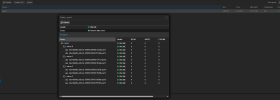Hi all!
My VM are very slow and after a lot of try with no solutions i have to ask to you
Trying with only one VM with Linux Mint 21.6.
This is my VM settings:
My server is a DELL PowerEdge R620 with:
I'm not using hardware raid (the H310 is in HBA mode), i'm using a ZFS-Z1 (RAID 5 like)
CPU Virtualization activated in bios
Qemu Guest Agent installed and activated on VM
Some ideas?
Thanks in advance!
My VM are very slow and after a lot of try with no solutions i have to ask to you
Trying with only one VM with Linux Mint 21.6.
This is my VM settings:
Code:
Memory: 8.00GiB/16.00GiB
Processors 12 (2 sockets, 6 cores) (host, flags=+spec-ctrl; +pdpe1gb) (numa=1)
Bios: SeaBIOS
Display: Default
Machine: i440fx
SCSI Controller: VirtIO SCSI Single
Hard Disk (virtio0): local-zfs:vm-111-disk-0, cache=writeback, discard=on, iothread=1, size=50GB
Network Device (net0): virtio=BC:xx:xx:xx:xx:xx:xx, bridge=vmbr0, firewall=1
OS Type: Linux 6.x - 2.6 Kernel
Use tablet for pointer: Yes
ACPI support: Yes
KVM hardware virtualization: Yes
Freeze CPU at startup: no
QEMU Guest Agent: Enabled
Protection: No
Spice Enhancements: none
VM State storage: Automatic
AMD SEV: disabledMy server is a DELL PowerEdge R620 with:
Code:
CPU: 2x E5-2680
RAM: 2x16GB ECC Dual Rank 1600Mhz
Controller: PERC H310 mini
8x original DELL 09W5WV 1TB6GB/S 7.2K 64MBI'm not using hardware raid (the H310 is in HBA mode), i'm using a ZFS-Z1 (RAID 5 like)
CPU Virtualization activated in bios
Qemu Guest Agent installed and activated on VM
Some ideas?
Thanks in advance!


